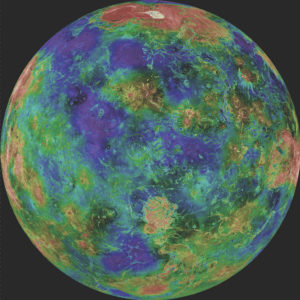
I have never met a pessimistic astronomer.” A New York Times reader recently posted this comment, inspired by another reader’s delighted account of looking through a telescope. I haven’t either. They must be out there, and I wouldn’t presume to judge them; one does not need to be a pessimist to feel down these days. As I write, COVID-19 dominates the news and our lives. Other troubles continue to brew, and an uncertain election looms.
Whether you’re an exhausted eternal optimist or the most stubborn of pessimists, the night sky can grant a moment of reprieve from the troubles of the day. Those lucky enough to call ourselves astronomers (professional or amateur) know that there is something strangely comforting and uplifting about the stars, despite their remoteness.
Whenever I set up my telescope and invite strangers to look, they tell me that they feel happy seeing these wonders that will go on with or without us. They want to think about how the beauty of the stars will endure, beyond our ability to mar. It is a feeling of bittersweet joy.
April will be a good month for that bittersweet joy. Head outside after sunset and look west, about halfway up in the sky. There, shining so brightly that you might not believe your eyes, will be the planet Venus.
Venus is Earth’s twin in many ways. Both are terrestrial planets, composed mostly of silicate rocks and metals; they are about the same size and mass; both orbit in the Sun’s habitable zone, where liquid water can potentially exist on the surface.
But the similarities end there. The atmosphere of Venus is so thick and so rich in carbon dioxide (the same CO2 driving our climate crisis) that a runaway greenhouse effect has taken over; the surface temperature is over 800 degrees, and the pressure is a crushing 92 times that of Earth. In 1982, the Soviet Venera 13 lander survived just two hours on the surface before succumbing to the heat and pressure; contrast that with 15 years for NASA’s Opportunity rover on Mars, with its cold, thin atmosphere.
Billions of years ago, before Venus overheated, it might have been more like Earth. It might have had a temperate climate, and oceans. If it did, those oceans evaporated long ago. Now dense clouds of sulfuric acid cover the planet; little sunlight reaches the surface. But those terrible clouds also reflect a lot of sunlight, which is why Venus is such a bright object in our sky.
From the little that we have studied Venus, it seems a lifeless hell. But astonishing discoveries here on Earth have shown us that life can exist and even thrive in hostile environments — from the lightless depths of our oceans, to the driest deserts, to the frozen wastes of Antarctica.
Perhaps life has a more expansive view of what is possible than we do; in which case, who knows what might abide on Venus, floating in its balmy high-altitude cloud layers, or sheltered under its rocks?
In astronomical terms, Venus is our next-door neighbor. It is the next planet in towards the Sun, and its distance from us ranges from 24 to 162 million miles. This April, its orbit and ours align in such a way as to create a spectacular sight in our evening sky. No telescope is needed. Look up at Venus, marvel at its beauty, and may its light kindle optimism in all our hearts. Clear skies!



